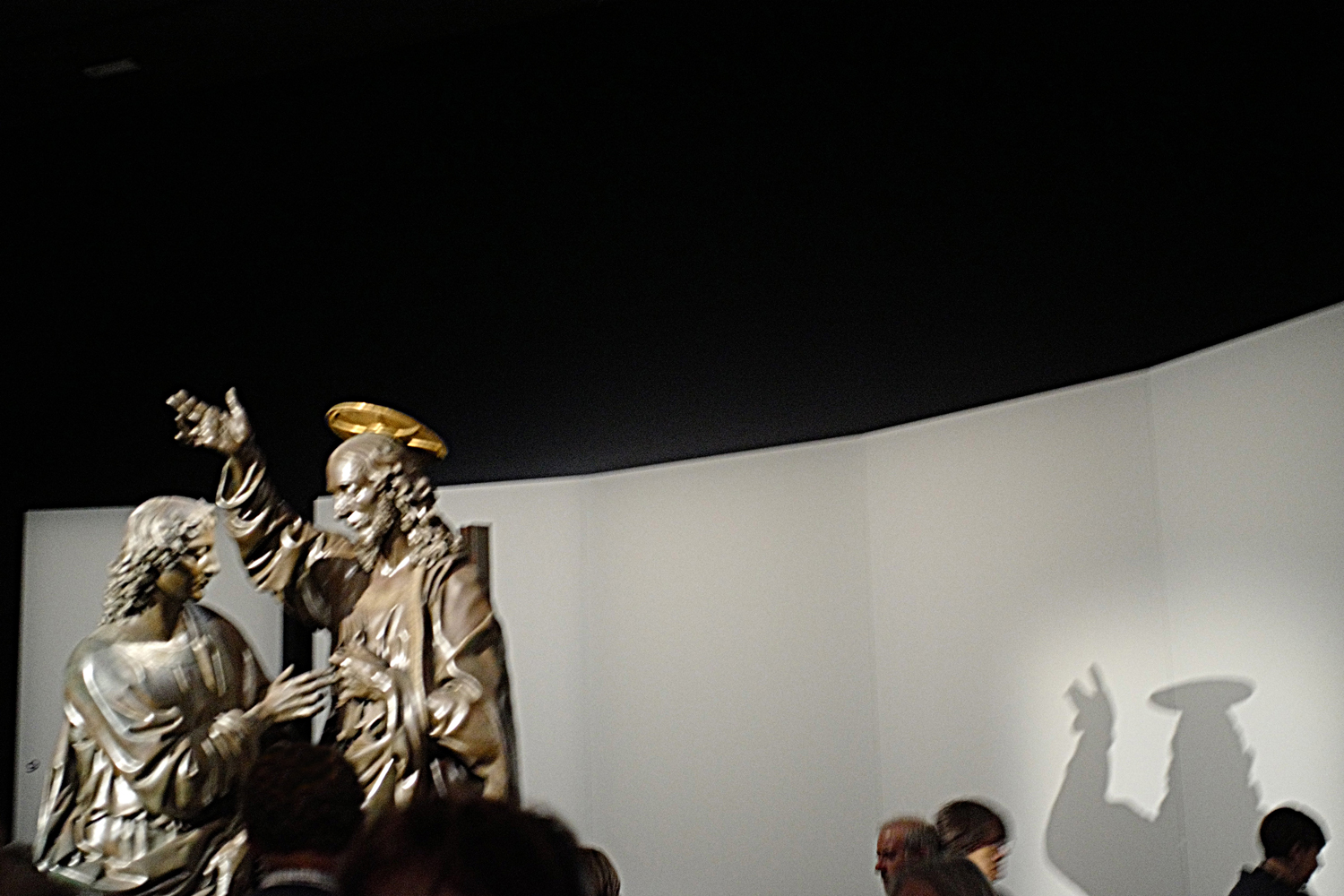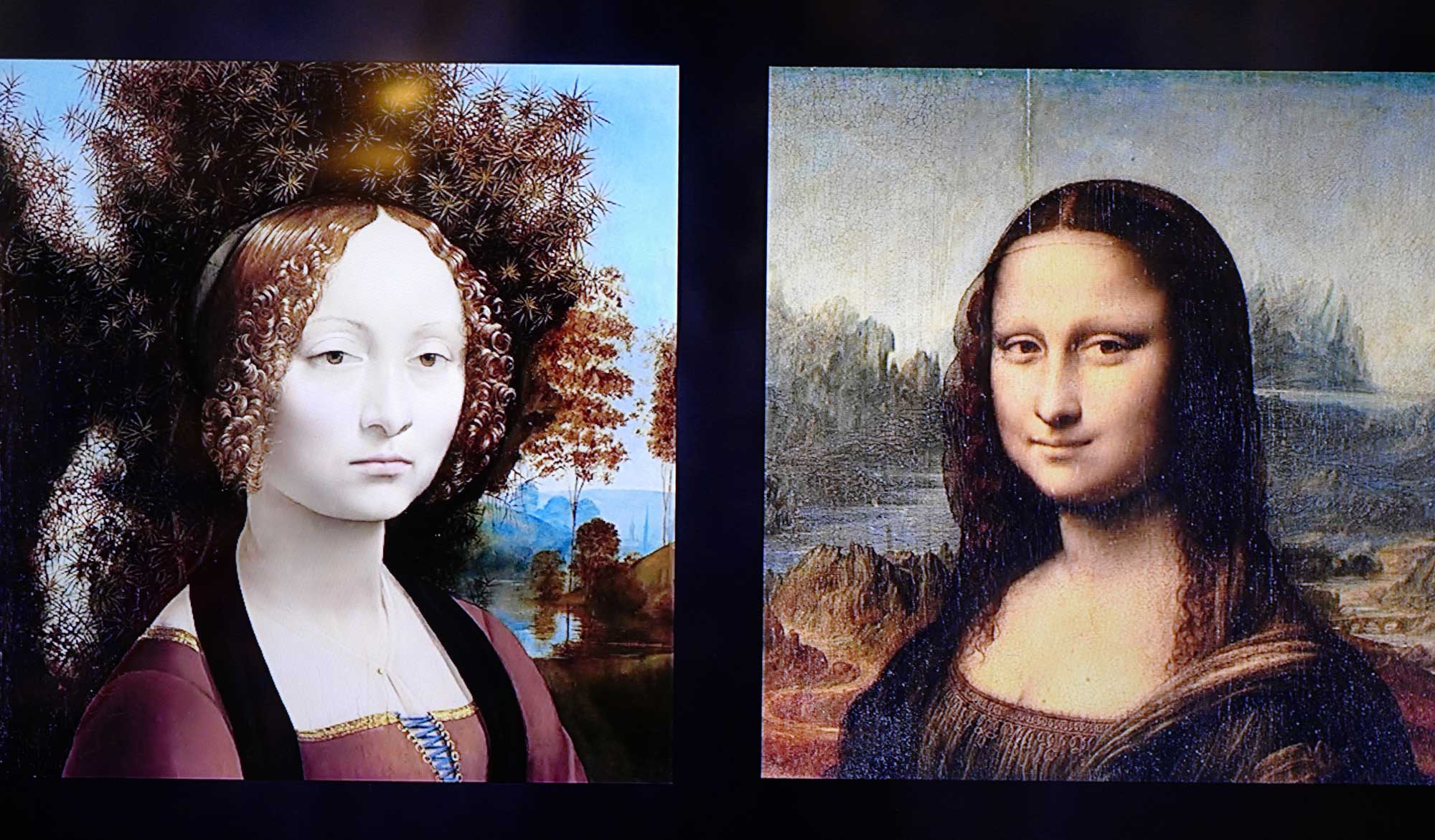
The Renaissance
and the Modern World
The14th
century Italian Renaissance was a transition between the Middle Ages and the
modern world. Developing out of the city-state commercial societies of Northern
Italy, it had evolved by the 15th century into the exploration of
both the globe and of humanness, the latter in the vernacular of the Christian
religion of the Middle Ages and in the spirit of the classics of Greece and
Rome. In that century began the exploration of the human condition, with all
its complexities. We hope this spirit will continue in the world of the
present. 1
The
Italian Renaissance
The
Louvre in Paris is the largest art museum in the world. In 2018 it had more
than 10 million visitors, more than three-quarters from foreign countries,
testifying to its universal appeal. In 2019, it opened a blockbuster exhibit
chronicling the life and work of Leonardo da Vinci (Léonard de Vinci), mainly
sponsored by the Bank of America. The exhibit opens with statues from a church
in Florence, Italy by Andrea del Verrocchio (1435-1488), a sculptor who taught
Leonardo. The composition of both is called “The Christ and St. Thomas.” In
this installation, the figure of the risen Christ is pivotal and is an
introduction to the rest of the exhibit:

Christ
is now perfection itself, a perfection now inaccessible to humanity, who like
those caught in Plato’s cave, can only see the shadow world of appearances
derived from the perfect world of ideas built by the intellect (classes, in
modern computer languages). But on the other side is his disciple, St. Thomas,
doubting and fearful, and as the exhibition catalogue notes, “…(his) garments
are an expression of the invisible states of the soul and of the spirit. The
garments of Thomas speak of the torments of disbelief, the desire to see and to
touch (the wounds from the crucifixion), the fear of touching and the regret of
having seen the blessedness, forever imperfectly.”
Leonardo’s
goal was a science, making painting a life-like depiction of the real world. In
order to do so, he became an acute and systematic observer of the natural world
and an engineer, creating only around fifteen paintings, some continually
revised in a process called pentimento. The almost priceless
masterpieces that we see today did not just happen by acts of inspiration or of
will. They were the result of years intensely studying anatomy, engineering and
perception. In the next room, the Louvre displays some of Leonardo’s more than
fifty notebooks. We note three excerpts from these 2:

an arm

water turbulence and wave interference

reflections
of light on a cloud
Each of these studies is of a natural phenomenon that Leonardo
(1452-1519) observed. Now, if you compare his painting of Ginerva de’Benci
painted in 1475 with the Mona Lisa and her enigmatic half-smile begun in 1503
and continually revised until about 1517, you can see what his acute
observations of nature and of perception added.

There’s more. If you look directly at the Mona Lisa you will see
her enigmatic smile with the high-resolution portion of your eye. Then look
slightly away using its lower-resolution peripheral vision. You will then lose
all the subtlety and see only a broad smile. Click here for an enlargement.
While seeking to perfect an art that was true to life,
Leonardo lived in the Renaissance world of political turmoil. In 1494, Charles
VIII of France invaded Italy to favor the Duke of Milan against the King of
Naples. This invasion marked a series of French and Spanish interventions in
Italy that lasted for sixty-five years, ending the Renaissance and its tolerant
world open to innovation. The Louvre exhibit alludes to this, noting “His
contemporaries saw Leonardo as the forerunner of the modern style because he
was the first (and probably only) artist capable endowing his work with an
awe-inspiring realism. Such creative power was as overwhelming as the world
inhabited by Leonardo – a world of impermanence, universal destruction,
tempests and darkness.”
The Modern World
Like the Italian Renaissance, the present liberal world order
focuses on what is valuable in humanity and in the world. Who now remembers
Charles VIII? But this order is now being called into question. Its largest
failure has been to erode the well-being of its middle classes, upon whom
democracy depends. We note the following reactions:
Donald Trump, President: “I alone can fix it.” 3
Can he?
Under the theory that there is a tradeoff between economic equity
and efficiency, in 2018 the Trump administration cut corporate and income
taxes. But economic growth increased beyond the promised 3% for only a couple
of quarters, before relapsing to around 2.1% at the beginning of 2020. CBO
projections now predict trillion dollar budget deficits beginning in 2020 for
as far as the eye can see.
By valuing personal loyalty above competence, Trump has
hollowed out the State Department and is now on the way to hollowing out the
Department of Justice. Next will be the U.S. military. These organizations will
eventually fail to do their jobs well.
The Greeks had a saying, “Character is destiny.” If the
electorate is indifferent to the bad character (not just a few rough edges) of
an angry, divisive and tweeting President, it will be unable to recognize and
to remedy the causes of the nation’s decline. Democracy can end with
indifference.
Thomas Piketty, French economist: “Above all, (social)
questions are complex in a manner that does not at all justify their
abandonment to a small case of experts. On the contrary, their unique
complexity enables us to hope for progress by a vast collective deliberation,
founded on the reasons, pathways and the experiences of all things by all.” 4
Jedidiah Purdy, Columbia University Law Professor: “A
democratic people should be able to hope that, over time, it is improving – not
just getting richer, but understand more of how it intends to live and coming
closer to that ideal. For this to make sense, it’s members must be able to step
outside the present and call on a better version of the country. They will call
on familiar stands of dissent, of course-religious prophecy, constitutional
ideals, practices of civil disobedience-to show that they are addressing the
present from a possible imagined future. A democratic culture gives its members
the means to speak to one another in this way. It troubles our simpler premises
-neutrality and non judgement-but strengthens essential democratic powers: to
criticize, exhort, and change ourselves” 5
How do we solve the complex problems of global warming,
epidemics and an economy that fails to address the needs of a majority of its
people? The first quote is obviously authoritarian, “I alone can fix it.” The
second and third quotes properly rely upon the people in democratic society to
demand change. The Leonardo exhibit, however, addresses the crucial importance
of expertise, necessary to solve difficult real-world problems. In his second
term, both President Obama and House Speaker, Paul Ryan, could agree (at least
in theory) that problems needed to be solved.
But what are the solutions? The above problems cannot be
solved without expertise, to know, for instance, that planting a trillion trees
will not solve the problem of global warming, to design electric grids with
adequate storage capacity. For global warming, the crucial variable is the
effective control of atmospheric carbon dioxide. For epidemics, the crucial
variable is the early identification of those who are sick. For the very
complicated issues of economic reform, decisionmakers deserve better than
canned ideologies. Our next article will discuss practical economic theory.
Footnotes
1.
This exhibition is notable because it exemplifies how
historians think of history as a resource, rather than a linear progression
that results in us. In 1931, the president of the American Historical
Association, Carl Becker, noted to his colleagues that history’s “proper
function is not to repeat the past, but to make use of it, to correct, and
rationalize for common use.” * We were very surprised to find that this exhibit
was organized with this goal, to address a very complex world where the center
is in danger of not holding.
Historical analysis is essentially fact based
story-telling, the way that humans communicate complex ideas and events. Our
analysis of the Renaissance considers: context (in which events unfolded), contingency (about the potential
for change) and agency (what people say and do). By doing so, it endeavors to
explain the past and to make the needs of the future somewhat clearer.
Just so you
know where we’re coming from. During our Jesuit high school educatio, we
studied
years of Latin, an effort that got us into Stanford where we encountered
Western
Civ and what
our instructor said…
* “France
in the World”; edited by Boucheron and Gerson; Other Press; New York,
N.Y.; 2019; p. xv.
2.
The first and fourth illustrations are from PBS NOVA;
“Decoding da Vinci”; Season 46; Episode 21. The second and third are from the
exhibit.
3.
Donald Trump; Republican National Convention; 7/21/16.
4. Thomas
Piketty; “Capital et Idéologie”; Editions du Seuil; Paris, France; 2019; last
paragraph Kindle version. The May/June, 2020 issue of Foreign Affairs writes:
“The advantage of liberal capitalism resides in its political system of
democracy. Democracy is desirable in itself, of course (our note: this issue is
often missing in contemporary political discussion), but it also has an
instrumental advantage. By requiring constant consultation of the population,
democracy provides a powerful corrective to economic and social trends that may
be detrimental to the common good.”
The May/June, 2020 issue
of Foreign Affairs writes: “The advantage of liberal capitalism resides
in its political system of democracy. Democracy is desirable in itself, of
course (our note: this issue is often missing in contemporary political
discussion), but it also has an instrumental advantage. By requiring constant
consultation of the population, democracy provides a powerful corrective to
economic and social trends that may be detrimental to the common good.”
5.
Jedidiah Purdy; “After
Nature”; Harvard University Press; Cambridge, Massachusetts; 2015; p.286.